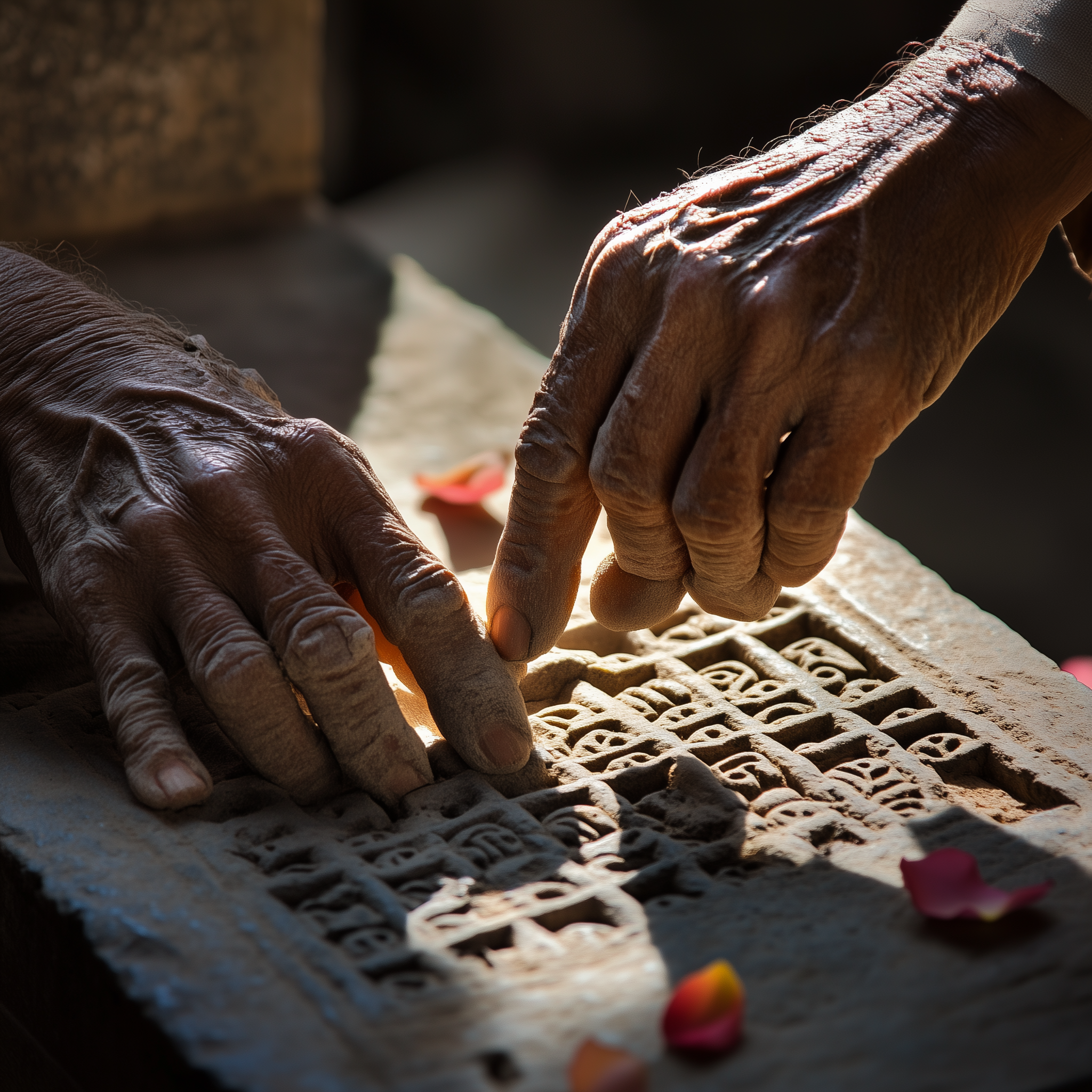WTF is craft?
In a world of infinite scrolls and artificial intelligence, the word "craft" oscillates between reverence and redundancy. As we navigate an era dominated by prompts, instant templates, and algorithmically-generated aesthetics, craft exists in a liminal space, simultaneously exalted and endangered. Is it merely technique? A fleeting trend? A hollow marketing buzzword? Or something more fundamental to our humanity?
As a brand innovation strategist straddling commerce and culture, sensory design and psychology, I've pursued this question across disciplines. But it was in the quiet contemplation of Madhusudan Dhaky's anthologies on Indian temple architecture that I encountered craft not as decoration, but as devotion. The artisans who carved narratives into stone, who transformed raw material into deities, didn't separate the act of making from the sacred act of worship. They chiseled meaning into permanence, practicing craft as a slow-burning prayer, a form of embodied meditation spanning generations.
So today, in our frictionless digital world that prizes immediacy over immersion, I ask: what is the modern metaphor for those 10,000 hours of penance? What constitutes authentic craft when creation can be summoned with keystrokes?
Craft as a Human Constant: From Temple Stones to Code
Historically, craft transcended utility to become sacred ritual and societal cornerstone. In South Asia, it manifested through intricate textile traditions and monumental temple sculptures; in Europe, through the rigorous guild systems; in Japan, through shokunin philosophy, where craftspeople devote their lives not merely to technical perfection, but to humility and service to society.
Yet regardless of geography or era, craft was process before product. It represented a distinctive epistemology, a way of knowing through making, a methodology for becoming. The craft transformed the maker as profoundly as the maker transformed the material.
This isn't nostalgic sentimentality. It's neurological recognition. Human beings are neurologically wired to create with our hands, engage our senses, and sustain focused attention. Craft has always been our primordial language for making meaning tangible, for rendering the abstract concrete.
Craft as Culture: A Repository of Collective Memory
Anthropologists recognize craft as narrative embodied in material form. In South Asian households like mine, women embroider sari borders not merely for aesthetic enhancement but as tactile inheritance, transmitting cultural codes across generations.
In Indigenous communities worldwide, beadwork, pottery, or bark weaving encode sophisticated knowledge systems about land, seasons, and survival strategies.
Craft emerges when creation is deliberately decelerated, when identity, lineage, and accumulated wisdom become embedded in material. It often exists outside formal economic systems, performed by those whose labor history has been systematically undervalued. Yet it remains an unparalleled vehicle for cultural memory.
In our contemporary context of diasporic identities and post-globalization flux, craft frequently serves as the thread connecting us to our origins, the material practice through which we remember who we are and reimagine who we might become.
Craft in Work: Beyond Creative Industries
This is precisely where those outside traditionally "creative" fields must enter the discourse.
Whether your domain is finance, policy development, healthcare, education, or software engineering, craft remains essential. As routine cognitive labor becomes increasingly automated, the future belongs not merely to knowledge workers but to wisdom practitioners.
I truly believe that in tomorrow's professional landscape, our competitive advantage won't derive from credentials alone. It will emerge from our craft.
Our capacity for deep, empathic listening.
Our ability to communicate with precision and nuance.
Our skill in designing meetings, moments, and meaning with intention.
Our facility for synthesizing complexity into clarity.
In this context, you yourself become the instrument. And the deliberate refinement of your capabilities, intellectual, emotional, ethical, becomes the new penance, the contemporary equivalent of the temple sculptor's devotion.
Craft in Branding: Authenticity in an Age of Simulation
From a brand perspective, "craft" functions as shorthand for care and attention. It evokes notions of scarcity, narrative depth, and multisensory engagement. In our oversaturated markets, consumers increasingly seek not more options but more meaningful ones. They hunger for evidence that somewhere in the production chain, human intention and integrity remained intact.
This explains the premium commanded by "crafted" products and experiences: they signal that individual makers mattered, that process wasn't sacrificed for expedience.
When we encounter authentic craft, in a meticulously executed pour-over coffee, a handwritten note, a thoughtfully paced digital onboarding journey, we experience a profound sense of being considered. Of being recognized as fully human in a system that too often reduces us to data points.
Craft in the Age of AI: Redefining the Human Element
Now let's confront our digital present.
AI generates content with unprecedented speed and volume. It composes symphonies, designs typefaces, even mimics distinctive brushstrokes with remarkable fidelity. This technological reality forces a profound reconsideration: What distinguishes human craft from algorithmic creation?
If AI can "make," what makes our making matter?
Perhaps craft in this emerging paradigm pivots from output to input. Craft becomes the intersection where human curiosity, disciplined practice, and present-moment awareness converge. It manifests in the critical space between noise and resonance, between mechanical execution and intentional choice.
This perspective isn't anti-technological, instead post-technological. It centers human fluency not just in tool manipulation, but in taste formation, ethical discernment, and philosophical coherence. When algorithms can generate anything, craft becomes the why behind what we choose to bring into existence.
So WTF is Craft?
Craft isn't merely aesthetic, though it may manifest beautifully. It isn't perfection, though it strives toward mastery. It isn't confined to specific professions, though some traditions have preserved it more visibly than others.
Craft is commitment made manifest.
Craft is care rendered tangible.
Craft is the courage to resist acceleration and create with intention whether you're developing a pitch deck, composing poetry, designing a product, or drafting policy.
In an age where everything is optimized for efficiency and scale, craft remains stubbornly, gloriously human, the irreducible element that makes us irreplaceable. It's not despite our technological capabilities but because of them that craft has never been more essential to our collective future.
Craft reminds us that HOW we make shapes WHAT we become.




